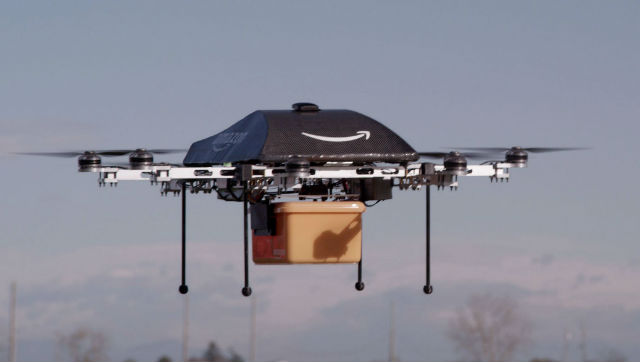Amazon is promoting the establishment of a network of unmanned air vehicle control zones to ensure that its anticipated Prime Air delivery service will integrate smoothly into national airspace.
Speaking at the AUVSI Xponential show in New Orleans on 2 May, Gur Kimchi, vice-president of Prime Air, stressed that movement needs to be made on airspace integration methods now, so that services are ready to be carried out when the necessary authorisations are granted.
Kimchi referred to the idea that execution of the airspace control would have to be carried out by “federated traffic controllers”, which would consist of different overlapping networks of UAV operators communicating with each other and deconflicting, just as cellular service operators communicate to ensure that different networked phones can connect.
He says that NASA has been a “shining example” of engineering initiative through its unmanned traffic management effort, while the Joint Authorities for Rulemaking on Unmanned Systems working group has been useful in providing integration oversight.
Kimchi says that the model needs to be established now, even as the delivery service is in its infancy, to ensure that there are no issues when these operations begin, adding that airspace access rules need to be communicated effectively to ensure that everybody is aware of movements in the air.
Amazon proposes that a no-fly zone be established at 400-500ft, to allow for UAVs to travel to delivery destinations. Real-time no-fly zones can also be imposed on UAV operations to allow for manned operations as necessary, and the systems can simply wait until it is safe to enter the zone again.
“The only way this will work is if everybody speaks the same language,” he says. “We can make this happen.”
He stressed the importance of safe, secure and interoperable operations, and warned that the pace of how this will move should not be set on current standards, because it is expected to grow rapidly in the next five years.

Amazon
Meanwhile, start-up Uvionix is preparing to launch its nSky UAV delivery service – which it claims will be provided for just $3 per delivery – in the next year.
It has designed a clean-sheet coaxial vertical take-off and landing aircraft that will be able to deliver 1.2lb payloads, and is targeting the convenience market to include the delivery of hot drinks and fast food.
“Our primary aim is to begin by delivering small parcels,” Boris Iskrev, chief executive of the company, tells Flightglobal. Uvionix is aiming to deliver within a 12mile radius, and is moving away from the need for warehouse despatch by offering the system to retailers to operate in-house but be controlled remotely by the Uvionix.
Regarding airspace integration efforts, the company is optimistic that challenges will be overcome by the US Federal Aviation Administration (FAA) to allow for such operations.
“We have seen a much more aggressive approach from the FAA with regards to integration recently,” Yordan Iskrev, president of the company, adds.
The system has a number of monitoring and redundancy systems integrated to ensure safety, including a parachute recovery system if the battery fails.
Source: FlightGlobal.com


























